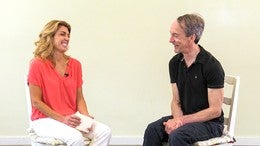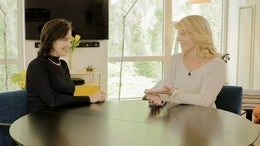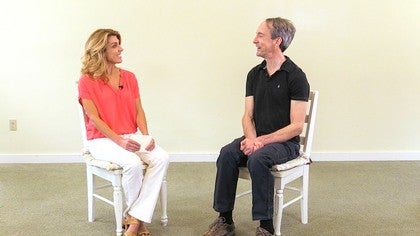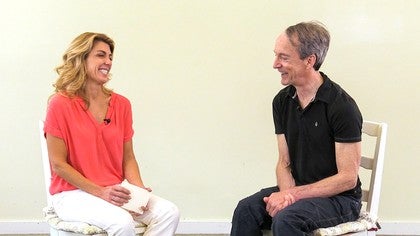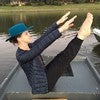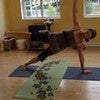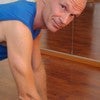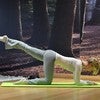Description
About This Video
Transcript
Read Full Transcript
Intro
Kristi Introduces Marika Molnar
Jean-Claude West Calls Marika Molnar, the Rockstar of rockstars of being in dance medicine practitioner. Maricka. Molnar has been a physical therapist for over 37 years and the first hire to work onsite at a major ballet company. That company was in New York City ballet under the direction of George Balanchine. She studied up ledger for all is a licensed acupuncturist and practice Palladio's with Corolla, tree air and Kathy grant to name just a few for over 30 years. Mariska has been a constant source of inspiration and information within and for the Peloton community today where west side dance physical therapy where Maurica has provided physical therapy to the school of American ballet in New York City ballet here since 1998. Thank you very much for letting us in today.
Chapter 1
Becoming a Physical Therapist
My pleasure. Okay, thank you. How does it feel when you hear you're the rock star of rock stars from someone like Shawn Claude West?
I know I only listed a couple of things, but I don't know what you would say. Is it a a ledger therapist? Is it a well observed
It's whoever the person is in front of you and you take all your knowledge that you've gained and you apply it. So tell, tell us about your toolbox. I know it's big. So there's John [inaudible], I mean just, well, anything that, you know, prior to becoming a physical therapist, I have a master's degree in dance edu education from NYU. And during that time I studied with this wonderful man named Andre Bernard. He taught anatomy for dancers. This is back in the 70s and that's kind of when I started my whole polities um, training as a client. Yes.
Back many years ago. And I also have a background in rhythmic gymnastics and gymnastics really. So I had a lot of, you know, body activity when I was growing up. And I think that really helped me in my physical therapy practice because I was a mover always. And I'm a true believer that movement is, life is health, it's life is health. So seventies you're working with. So in the 70s, I was teaching dance and gymnastics at a private school.
And then I just had this inspiration, literally like a light bulb that said you should do something more, more [inaudible] than teach [inaudible]. And um, I ended up going to physical therapy school at Columbia University. I applied, I got in and when I got there, I found out that I was the only one that didn't have an interview that didn't have to do any kind of an internship. I don't know why. I have no idea. I think it's because I was already out working for five years. Okay. And possibly they thought, well, she has a background and she's going to coming back to school, I think cause it was a pretty, um, competitive program.
And then I graduated and it was a four, actually, it was a 14 month program because back then it was still just a graduate certificate. And then I, today, today it's a DPT doctorate of physical therapy. Today it's a seven year program. And um, back then it was 14 months. Wow. Post, you know, post a bachelor's degree. Of course. Yeah. And then, um, I started working and I had known Dr. William Hamilton previously because he helped me with a lot of my dancers and gymnasts whenever they had an injury. So as soon as I graduated, he called me up and said, can you just take a look at some of these dancers? Well, they happen to be dancers of the New York City Ballet. This is the Dr. Hamilton that Corolla referred to, or she didn't talk to William Hamilton.
He's been involved in dance medicine since the early seventies. I mean, he was the consultant to George Balanchine in New York City ballet for many, many years. A wonderful man. And he actually was just recently over here giving an inservice to my staff few weeks ago. And he still goes to the ballet and he watches class every Friday morning. He comes to the theater and watch his class. The dancers are very lucky to have him actually. And so am I.
He's one of my mentors. And so it just, you know, timing is everything. I happened to be in the right place at the right time with the right equipment and I'm out of school. And then I get a phone call from the, uh, general manager of the New York City ballet and he said, I'm Mr Balance. She would like to know if you'd like to work with the New York City Ballet. And I said, Oh yes, of course.
I hung up and I practically passed out. But, and that's how it started. And that was in 1980. Well because you had, you'd been seeing some in seeing some of the dancers literally right out of school. I just graduated in 79. My goodness. And this is 1980 and you become the inhouse. I become the inhouse PT for the first time ever in the United States of America. Did you work outside of there too? Yes, I did. I had a wonderful job with, um, e on the east side called East side sports, physical therapy with Anthony Serengeti, who was my last clinical, um, advisor who really helped me quite a lot in, in my growth and development as a physical therapist. My goodness.
I owe a lot to him. Yeah. If that were Sean cloud would go John Claude Jean-Claude, I, you know, it's fine. I was trying to remember, I, I used to go down to his place on Bleecker street and he and his lovely wife, Ana would always be there working. And I took, you know, some classes with him and sometimes with her and sometimes we just talked about things and how we would do things, well if you do it this way, then what happens to this part of the body and let's try this. So it was always to him just by doing, going down there, you know, honestly, I don't know exactly. He would probably remember better exactly how we met, but I know it was, you know, I have to go by how old my daughter is, you know, she's 26 now, so I know it was before then. No, I don't think so. All right. So I, okay, so now you say yes and you're, you're, I guess that just means you go there or did they come to you when you're the New York City ballet? No, I have a, I have an, I have an office at the theater, so I go over to the New York City ballet and we work with the dancers there. If they have any kind of that we can't take care of in house because really what we do there is more preventative care. And if they have a problem, then they'll come here because then it's kind of considered workman's comp.
And when we're there, we're really helping the dancers that are performing that day. So we try, we try and keep that a little bit separate. I mean, sometimes the lines get crossed if somebody needs something as an emergency. But, um, since 1980 you've been consistently wow. That's, that's amazing. Yeah, it is. And you know, the, the, we were talking about John uploads your earlier, but I've studied with so many different people over the years. I mean, I went to Michigan State and did the whole osteopathic program for physical therapists, was a special program that they ran that was a continuing education program and that was fantastic. I did that. I studied with, um, I actually studied with John Sera. Dr Syriac, um, back in the early eighties, down in Florida. If it was a nine day course, I'll never forget it. So for those of us who don't know what he does, he's a doctor Syriac more or less invented orthopedic medicine for the non surgeon. So it was a lot of manual therapy, a lot of hands on, a lot of mobilization, manipulation and um, it was fantastic. It just opened my eyes to a whole other world, you know,
Chapter 2
Culture of Dance Medicine
that, and you included now that are all pioneering, I think. Um, [inaudible]
So the dancer returning to stage wouldn't just go back to class right away. They would do kind of a technique, a technique class that prepare them to go back to class. And so that was a new thing. Um, and of course they over in Europe they were much more accepting of that, I should say, at least in London, in England. Um, whereas here the, uh, dance medicine was unheard of. And even the culture of dance medicine was kind of a state of denial that you didn't really need any help. Dancers were still the dancers creating the culture. It was, I was definitely the dancers creating the culture. Like nobody, I'm fine, I'm fine, I'm fine. I don't need help.
I don't need any interesting [inaudible] well of course it was a different, you know, well that's from what is such a different time. It's such a different time. But so far we're, I don't know where John Up Ledger he was down in when I met him. It was in Florida. He's down in Florida. So, so far I think everyone you've named with it has been in America at least if not American, well Vladimir Yonda who was checked Slovakia and I studied with him. I had the good fortune to study with him when he came to the states and he was a huge influence on really getting me to understand relationships in the body and how things work. And if something, if, if, if something is happening in your foot, you might not necessarily just look at the foot, but you might have to come up to the opposite side of your hip. And then maybe to the opposite side of the shoulder. And then looking at gait, I became a real name, a real gate fanatic.
As a matter of fact, I don't even know when it was, but it must have been in the early nineties Marie jus a plum invited me to California to teach to a wonderful group of pilates instructors about gate. And the funniest thing was at Allen Herdman happened to be in town from England. Wonderful Palladio's teacher of course, and a master teacher now. And I had the, I had the privilege of teaching him how to walk, walk because based on, you know, the kind of things that we were doing and looking at the relationships in the spine and how the spine should move with the limbs in opposition. We had actually, it was really fun. I wish I would have put that in the intro.
She taught Alan Herdman how to walk. So wow. When was that about? That was probably in the early nineties. It was before, before, um, Joan Breitbart invited me out to Santa Fe to teach and, and yes, I did. As a matter of fact, it was really a wonderful experience and I think that was in the late nineties maybe. And we did this great workshop on osteoporosis prevention and how to continue using the Palazzos equipment with clients who have osteoporosis. So that was, I guess by then I was kind of teaching [inaudible] teachers how to work with specialty groups because osteoporosis was big in the news back then. And then certainly total hip replacement started becoming more and more frequent and for younger and younger populations, you know, so a lot of people ask me, well what do I do with these clients when they come?
Because so much of [inaudible] is flection. So you know, basically, um, it was really a great experience. Instead you still do that? I mean, I do, I still do give, um, certain classes in specialty education and populations. I do.
But I have studied with different Rolfers who teach more the, the fascial work, but not with the intensity of the 12, you know, different parts of the body. Um, and I, I try and attend the, um, conferences every couple of years to see what's new because also, you know, I became an acupuncturist in 2004, so there's a wonderful woman, um, acupuncture, his phd in Boston, Helen, Helen [inaudible], and she's really research is the acupuncture points and how they affect the Fascia and how they affect the health of the body. Whether you just have, um, a simple problem like say an ankle sprain or you have a more serious one like cancer. And she's done enormous amounts of research and she is also one of my inspirations actually. I read a lot of her work.
I can well wide, no, I needling because, um, physicians, osteopaths and other physicians, physiatrists for example, would inject into the trigger points. They would inject some sort of, um, I'm not really sure, even if they just injected like a little sugar water solution to break up the trigger point. I see. So, and that is excruciatingly painful. Dry needling. You're, it's called dry because there's no solutions just to an a, it's a, it's an acupuncture needle, but it's not acupuncture. Okay, thank you. So when do you sleep? That's a good question. Especially now we're in the middle of our season and it's a very wonderful but intense season.
So we're doing quite a lot of ballets with a lot of people involved. Okay. So you're, so I'm, I'm really right now not sleeping very much, but the end of May and then I have the month of June pretty much free. So then what I mean free is I'm just here at my office, not it's, it's becomes, you know, becomes a regular five day week instead of a seven day week. Wow. Um, it's probably not too early to ask. What motivates you to, to, to do all these studies? I'm just interested in the human body. I just really, to what end to, I just, just how does it work and why do, why does it do those things? How can, how can someone who is so hyper mobile be able to do these beautiful movements and look perfectly stable?
It's just a curiosity. I love it. I love to take courses to, by the way, you'd love just, if I don't take slow, I just love to take courses. What have you not taken yet that you want to take? What have I not taking it? Uh, we have a couple of hours to really, I'm very fascinated right now with the study of the brain and I've been studying, um, how to use ultrasound diagnostically to look inside the body and see, in fact, what is that muscle doing or what is that tendon doing? Is it the muscle that I'm thinking I'm using? And that's been really fun because you know, we always talk about use your transversus abdominals and use your, you know, don't use your obliques. Usual breeds. Well, if you look, if you look with the ultrasound machine, you could see whether or not you're using those muscles because it's very clear.
So it's a wonderful tool to work with your clients and patients, but also for myself to see if I can differentiate between a muscle tear or injury versus a fascial strain versus some kind of tendinopathies. It's just great to be able to make that differentiation because that can guide your treatment and it can show your progress. Progress is great. You can watch a muscle that may be had a lot of fluid in the mid substance start to change and come back to what it should normally look like. It's really, yeah. That's really cool. I know, I, I know it. I called Y'all quota was I said, oh my God, this is so exciting
That's close as I've gotten. So that's very interesting to me. Okay. It's time.
Chapter 3
Starting Pilates
I want to know about place. I want to know where does holidays fit into all this? How'd you get there? Who and how did I get there?
Politeness was kind of the secret. It was a big, it was a secret, but it was a great secret cause all dancers knew about it and everybody that dance did [inaudible]
Because I guess the culture of the time was, everything you did that had to do with your body was kept under wraps. You know, you didn't want people to know that you needed to do anything else but dance
And you know what? I met [inaudible]
It's not like you had to be perfect.
Nice. You've always been that way, it sounds like. Yeah, I think so. I think so. I know back in when I was, before I became a physical therapist, we had this, um, opportunity to start the first rhythmic gymnastics competition in New York, which in Europe it was widespread, but here they, people didn't even know about it. And because I was teaching at a private school than a lot of the private schools loved it and got involved. So it, it was one of those fun things that incorporated a lot of the kind of the polite ease information and, and the, certainly the, the whole principle that you use in PyLadies, we could, you know, use it and then, you know, throw hoops and balls and clubs and streamers around and yeah, it was great. It became, you know, I think they, I think they call it artistic gymnastics or rhythmic. It's rhythmic. It's rhythmic gymnastics. Yet now it's um, an Olympic sport. Yeah. You know, this is, back then it was just the beginning. So, so, you know, it's interesting how you see that the, the work of, of someone like Joe Palazzo is really just blossomed into so many other areas.
You know, it's great
So I think it's so apropos and applicable, you know? And I also think that one of the things that we're seeing now that I'm in particular working with is everybody's doing a little, not everybody, but a lot of people are doing too much activity, not only mental activity, computer activity, running, and they, everything has to be extreme. Yeah. And honestly, I think that the also needs recovery time. The body needs to breathe, it needs to be able to take the time to fill the lungs, let the diaphragm move, and really recover to be ready for the next thing. So that's kind of where, what area I'm working in now, especially with the dancers, because they work so much physically and mentally because it's not just that you're using your body when you're doing ballet or Dads, you have to learn the choreography and if you have to learn three new pieces a day and then perform something totally different at night. Right. That's a huge mental effort and your body needs recovery.
Your brain needs to recover.
Chapter 4
The Parasetter
And then you can breathe into it and then actively you can also breathe into it and actively exhale so that you bring your ribs toward each other. And when you do things like that, you really allowed the dire, you know, the diaphragms I could dome. And you allow the diaphragm to move up and down through its full excursion, which then kind of massages the spine. But it also allows the circulation of the body to be so much better. And it allows the expansion of the rib cage and helps the lungs fill with more oxygen. It is great and it's a, it's a great recovery tool when, if that's how you want to use it.
But it's also great for exercise because you're not pressing on your spine. So it's, it's pretty simple. You know, it's a tomato, it's made of this composite material that's firm but resilient. You could squish it. And you feel it. And then it has this nice center channel and you put your spine in the middle. And the, the distance between these two is kind of pretty anthropometric Li design so that it's on the inside of your shoulder blades, but on your rib cage.
Okay. So that you can really feel your ribs. And one of the things that I think helps with this is that we're getting feedback to our back, which is often an unknown place, right? So it's your thoracic spine. Yes. It's your thoracic spine, your head, your thoracic spine, your pelvis, and then your feet are on the floor. So we use it. Yeah. This is the rib rep and this is the head support. And, and what's nice about this is a, you don't have to use it if you don't want to, but a lot of the dancers like to put it under their neck because it gives them a little bit of support under their, under their cervical spine. Okay. Um, some people like to put their head on it if they have a little bit of a forehead because then they can feel it. They can press back into it and feel it. It gives you a sense, like almost like a little traction feeling and it puts you into that nod, that little Ford flex nod, which is a nice lengthening feeling. And then the rib wrap just comes around and we slide the rib, wrap on and then wrap it up on the exhale and we'll, we'll do it maybe when I'm, we have our class and you'll see it then.
But it's nice because as you exhale you just bring it around and then you close it and then you have the sense that there's something enveloping your entire rib cage. So you get a three dimensional breathing. Is the strap itself like what it's made of important, like say verse a theraband or something like that? Well, I mean the important part is that you can place this on you. It's a really nice neoprene, you know, and you can also take it off and wear it if you want. So you can take it off here and you could wear it as a kidney warmer or as a lumbar support if you want to. And, and we mostly, once you're using the whole thing, you're lying on it. I'm not exercising on it too.
Well that's the recovery phase is the line down. Then we have the exercise group and we also have kneeling and standing. So it becomes a few, it goes through a few levels depending on what your goal is. Like often I use this with the dancers for recovery, so we may do a 2025 minute recovery, which is basically breathing sounds good and just moving the arms and legs in a way that allows them to learn how the shoulder girdle associates from the trunk, the legs dissociate from the pelvis so they can the arms and the legs without having to really move the trunk. The trunk stay stable. It continues its breathing, especially for dancers, you know, I may have them do things like prancing with the feet at a rhythm that's faster, but still breathing at this nice slow inhale and trying to do a longer exhale.
So do you put this on the reformer then? Oh I do. I put it on the reformer. I put it on the Cadillac. They love it. People love it on the Cadillac, especially when they, you know, hang their legs in that strap and then they could breathe in the end the session. It's a great way to end a session. However, sometimes if, you know, people don't want to get off the Cadillac when he went into session like that, but it is a nice way to end with a recovery phase, five minutes, six minutes of Nice commonness and I like it a lot. It's one of the things that I've been working on for a few years and especially, you know, with it. The other, the other reason that it's nice too is because people spend so much time sitting that in order to, you know, even in the, the new meditation kind of movements, everybody wants to kind of recover and rest, but everybody's sitting bent over meditating, but they're sitting right, right. You know, it does, it's much harder to breathe. So I think lying down it just allows for an easier recovery transition. That's what I think sounds good right now. Yeah. Pretty good.
What's next for you? I mean, that sounds like a big project still in worse. Okay. Well, kind of what's next is we've been doing these really great dance medicine modules with my staff and I think that, um, we're moving that along into getting more and more people involved in, in dance medicine specifically. It seems like there's a real need for it now that a lot of the dance studios are recognizing the fact that their students will benefit if they really do know a better way to do things in terms of their anatomy. You know, because every body is not the same. Absolutely. It doesn't mean everybody can't dance and take a ballet class or a modern class, but because every body is different, there could be ways that assist these young dancers in ways that they will love dancing for their whole life and not have to suffer injuries. Right. You know, it is ambitious, but you know what? I think it's, I think it's definitely where I'm dance medicine is going a big outreach to the dance studios. I mean, initially, of course we started with the elite companies because they were the only ones pretty much that could afford to have, you know, all of these physical therapists and massage therapist on site. But I think that, you know, the more teach the local studio teachers, the physical therapists in the town so they don't have to come to New York to get help, you know, so where we're really trying to improve that knowledge base and that's also a lot of fun because it always makes me reevaluate what I'm teaching and what I'm doing because every few years there's something new.
It's not that the body's changed, we just see become more about that. Well, sometimes, sometimes, yeah, sometimes, I mean, I can give you a great example. Um, there's something called dancers, tendonitis techs, or Heloc as long as tendinitis. And one of the reasons, and really I would say probably all ballet dancers go through something like this because the tendon is the, is behind the ankle and they use that tendon to Relevate because they're balancing on their toes. So I try and teach them that they have to use, their relevant has to come from the calf and lift the heel, and then I take the ability to balance on the toes away. So in other words, they would, I would have them stand on something, oh, I literally take it away so they don't have the possibility of pushing with their toes. I see. And then they, it's a revelation to them. Oh my God, I can Relevate without pressing my toes into the floor.
And that reduces the FHL irritation because yes, you need the FHL you needed to push off, but you just don't need it just to go up and down and hold you there when you're balancing. That's very little things like that, you know, that I learn over time and I'm, I wonder why. Why does this keep happening? Why do you keep learning? Wow. Why does an injury keep occurring? This is the very reason you keep going. Yes. Okay. Yeah, that's really, you know, so things like that. And that's just been the last maybe five or six years that I've, oh, that's why, because they're using their big toe just to, just to go up instead of just instead of using it when they push off only, you know, and they, so that's kind of been fun. That's been fun, you know, and different things like using your shoulder blade, you know, using your scapula for what it's meant to be, which is to keep your shoulders lined up on your ribcage.
Right. You're not very good at that one. None of us are, because everything we do is forward. So we need to do things backwards a little bit behind us to recognize that whole back space. And that's one of the reasons I think that Paris set is great because it makes you aware of your back body as it's called in some circles. Would you consider yourself a pioneer? I mean, I know, I know. Believe me, when I first started it was not, so it was not so easy, was not so easy. People really didn't want, not, not, not just the dancers, but nobody really, you know, the artistic staff really didn't want to know about injuries. They just didn't want to know about them. Just take care of it in the back room, close the door, don't tell anyone. So yes, I've had, but yes. Well that was, you know, how many years ago, but it's really changed.
It's really wonderful now. And I, and the other thing that's really great is, is that the dancers themselves want to learn about their bodies. Have you ever wondered why aren't we taught anatomy in school? Yes. Often. Why don't we grow up learning anatomy? Just the way we did math and science. I have no idea. She didn't we and we know something about our bodies. I definitely think so. So anyway, that's, that's been another, another one of those things that keeps me going.
Cause I really love watching a dancer and then seeing why they're having their problem and then discussing it with them and then they understand it. Then they understand it and then they could do something about it. Okay. The simple something. Okay. Somebody has a pain in their midfoot and I watched them dance and I see that when they're doing their pure went and let and stop, instead of placing their foot flat, they stay on half point and roll in. So of course that Liz frank joint as it's known is Liz Frank.
That's the name of the joint, um, midfoot joint. It, it's, it's going to be stressed. And if you're repeating something over and over and over, you're constantly stressing it. At some point it is going to react and say, hello, I don't want this anymore. You're not paying. You know? And so I watched that and I say, okay, this is why you have this issue. So then they could go back in the studio and really focus and we train that movement. So that's really fun. That's, I mean, I feel very honored that I am working with these amazing people that I get to help them. It's really an honor. So,
And you would just show us a demonstration or a small class with um, students. Happy to thank you. Thank you very much.
Chapter 5
Demonstration with the Delgado Sisters
give you a little demonstration now and Patricia and Janette will lie down on the Paris center making that their spine
Very nice. Nice breathing into your back ribs, really feeling the pleasure of having your ribs get that feedback and filling all your intercostal muscles. And they're just passively breathing for another cycle or two.
And that for recovery is very important because it really helps the parasympathetic nervous system. So when we do this at the end of an evening of dancing, or at the end of a long day of rehearsal, the recovery aspect of using the Paris center is really prominent and it really allows the little intersegmental muscles to relax.
So it really allows that freedom of movement of the entire Scapula and arm without changing the rhythm of the breathing and the natural [inaudible]. None of the rib cage
And then let's start doing some knee folds on the next exhale. So bring one knee up and down on this exhale, whichever one. And doing this exercise and alternate legs, I use this to help them learn that the leg moves from the hip joint and that the trunk remains stable as the legs move. The breathing remains the same. Nice, consistent inhalation, exhalation, but it's active. So then on the exhalation, the front ribs come toward each other. Nice. And now we can start the Lex slide on the next exhalation. And the leg slides out again, how we're going into hip extension.
And again, teaching the body to understand that the leg moves at the hip joint and the breathing can remain the same and the pelvis does not follow the leg. And now let's say that an opposite arm movements. So we get a little diagonal challenge on the exhale, the arm and leg move and they come back together. So now we're challenging the upper and lower body, but the breathing remains the same.
And this is a challenge more in the coronal plane. Good. And then bring your arms up, fingers pointing to the ceiling and let the opposite arm move with the knee drop out. So again, a diagonal challenge to associating the shoulder girdle from the trunk and the leg from the pelvis.
Now the breathing cycle stays at the same rate, but the prancing is now going to increase. So they're rolling through their feet. And this helps the dancers learn that they can continue breathing even though their feet are moving faster, they don't have to stop or hold their breath. They can keep breathing.
And now we're going to hop on the right foot to keep the left foot up and change and change and change. And now we'll do jumps. This is the hardest one. And relax. Just breathe. Keep your feet down, inhale into your back ribs. Exhale, bring those front ribs down and together.
Inhale into your back ribs, front ribs down and together. And on your next exhale, let's bring the right knee to tabletop
Good. And now reverse direction.
So we put a little ballet movements and to warm them up. Okay. Go ahead and bring your knees back together and then bend the knees and reach for the floor with your knees bent. And now we'll just do a few nice deep breathing cycles for recovery. Good.
And now let's unstrap and then we'll move on to the kneeling so that we can stretch out the front of the hips, which all dancers really need this. Okay, so you know, come and kneel. Okay, so now we're kneeling with the tibial tuberosity of, or the little bump on the Shin in the channel and the knee is just supported in front and the breathing continues. And what I usually say is that, let's see if we can transfer the usage of the breath and the rib cage to weight bearing. So you want to breathe into the back ribs, right? You're breathing into your back ribs and you're exhaling actively bringing the front ribs toward each other and at the same time, lifting the pubic bone toward the belly button so that the dancer gets a nice feeling of length moving away from the pelvis, opening up the front of the hips.
And then on the next exhale, you can bring your arms down and now just kind of rock from one knee to the other because we're gonna step through into a lunge. So as soon as you're ready, step through with one leg, I really have to live beautiful. So now we're gonna work on the single leg. Basically the one that's in the back and raise the F of whatever leg is in the back. Raise that arm, this one. Okay. And now you're going to really work on breathing into this side of the ribs and do a very small side bend away from that leg. That's it. So that should feel really nice, especially through here and in the front.
And keep the breathing going into the back return.
Let's do once on the other side so you feel nice and level on both legs. Good, good. So first thing, breathing into your back ribs. Really feeling the expansion and then raise the right arm. So now you're going to breathe more into this right side and really feel it expand as you inhale. And then do a little side bend. Lengthen. Good.
Nice. Just a small one and come back. Good. And now lean forward a little bit. Tiny lean. Feel that nice length in the front of your hips. Beautiful. And then put your arms down and bring yourself back to both knees. Curl your toes under. Good and then stand up.
Good there.
So Patricia, let's do a couple of plea A's, baby plea A's and if you can see her, she's kind of finding balance.
And let's keep the knees and hips facing front and rotate left or right, and then come back to this center
So we take it to the type of movement that she needs to do, which would be turned out and working on that in particular, keeping the pubic bone elevated the way we did when we were lying down. It's a wonderful way to work on balance. Thank you.
The Teacher's Corner: Discussions
Comments
I loved the class on the parasetter!!

You need to be a subscriber to post a comment.
Please Log In or Create an Account to start your free trial.
